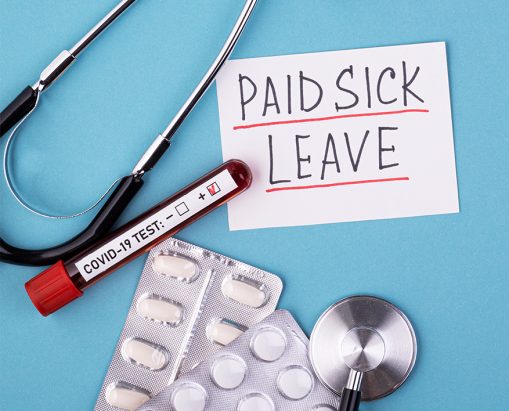
COVID-19 Client Alerts:
New Guidance from DOL about Paid Sick Leave and Emergency FMLA
New Guidance from DOL about Paid Sick Leave and Emergency FMLA
One of the most significant highlights from the DOL’s new guidance is clarification about the small business exemption, which appeared to apply when providing the FFCRA leaves jeopardize the business vitality of an employer with less than 50 employees. But DOL clarified that this exemption is only available to FFCRA leave taken because of COVID-19 related school or daycare closures. An authorized business officer must determine any of the following to claim this exemption:
- Providing the paid sick leave or expanded family and medical leave would result in the employer’s expenses and financial obligations exceeding available business revenues and cause the employer to cease operating at a minimal capacity;
- The absence of the employee(s) requesting paid sick leave or expanded family and medical leave would present a substantial risk to the financial health or operational capabilities of the employer because of their specialized skills, knowledge of the business, or responsibilities; or
- There are not sufficient workers who are able, willing, and qualified, and who will be available at the time and place needed, to perform the labor or services provided by the employee(s) requesting paid sick leave or expanded family and medical leave, and the labor or services are needed for the small business to operate at a minimal capacity.
Other highlights from DOL’s new guidance include:
- An employee is “unable to work” for purposes of taking FFCRA leave if the employer has work for the employee, and one of the COVID-19 qualifying reasons for taking the leave (see March 20th email for complete reasons) prevents the employee from performing that work. Note: This is different from the rules announced for taking California sick leave. An employee may use his or her California sick for preventive self-care due to the state-wide isolation order. An employee may not use his or her FFCRA sick leave for this purpose if the employer is an “essential” business and has work on-site or if the employee can work by telecommute, unless one of the other reasons for FFCRA sick leave is present.
- For teleworking employees, FFCRA leave can be taken intermittently if allowed by the employer. Intermittent leave can be taken in any increment.
- For employees working at their usual worksite, emergency paid sick leave and expanded family and medical leave must be taken in full-day increments, unless the need for the leave is to care for a child whose school or daycare is closed. In that case, the leave can be taken intermittently if allowed by the employer.
- If the emergency sick leave is being taken for any reason other than to care for a child whose school or daycare has closed, the leave must continue to be taken until the full amount of paid sick leave is exhausted or the qualifying reason for taking the leave no longer exists. The reason is because the FFCRA is designed to keep employees from spreading COVID-19.
- The FFCRA leaves are not available to employees laid off prior to April 1, 2020, even if the layoff is because of a Federal, State, or local COVID-19 order.
- An employee is not entitled to FFCRA leave if they are laid off on, or after, April 1, 2020. However, if the layoff occurs while the employee is on FFCRA leave, then the employee is entitled to pay for any FFCRA leave taken prior to the layoff.
- If an employer reduces an employee’s work hours, the FFCRA leave cannot be used to compensate for those eliminated hours. This is because the employee is not being prevented from working those eliminated hours directly because of COVID-19.
- Employees may not receive unemployment when taking FFCRA leave.
- Employees are entitled to continued group health coverage during a FFCRA leave under the same terms as if the employee continued to work.
- An employee is entitled to take the Emergency Paid Sick leave regardless of how much “normal” FMLA they have taken before April 1, 2020. However, for employers subject to “normal” FMLA prior to April 1, 2020, an employee may only take a total of 12 workweeks of “normal” FMLA, or expanded family and medical leave, during a 12 -month period.
Copyright © 2020, Murphy Austin Adams Schoenfeld LLP. All rights reserved. Please be assured that we make every effort to make certain that the information contained in this alert is current at the time this email was delivered. Because laws and legislation are constantly changing, please contact us if you are unsure whether this material is still current. Nothing contained herein should be construed as legal advice or a legal opinion on any specific facts or circumstances. The contents are intended to be for general information purposes only. We assume no liability in connection with the use of the information contained in this article. Given the rapidly evolving nature of legal and governmental responses to the COVID-19 pandemic, unfolding events likely will supersede many of the issues discussed in these updates. We encourage you to contact our lawyers directly for the most current information and counsel regarding legal and governmental responses to the COVID-19 pandemic. Please contact us to answer any questions you may have.

